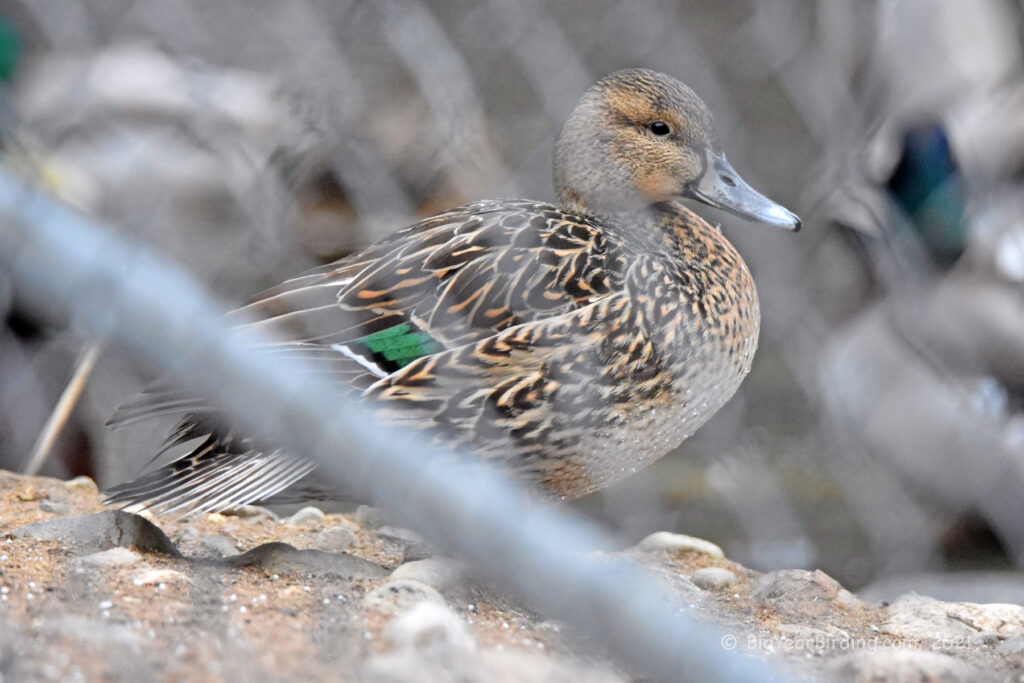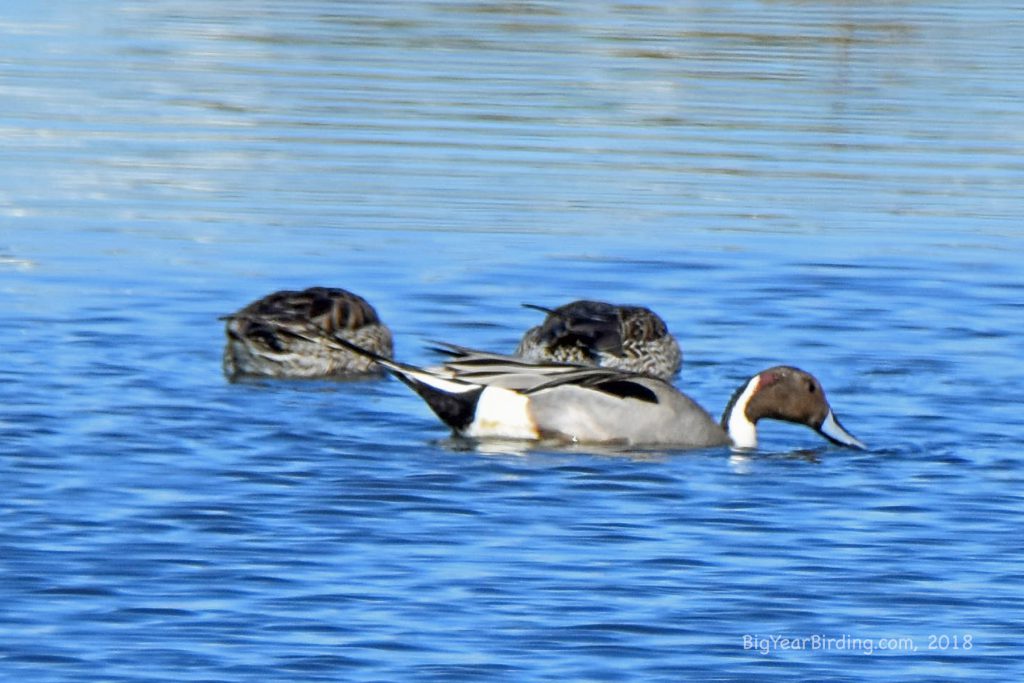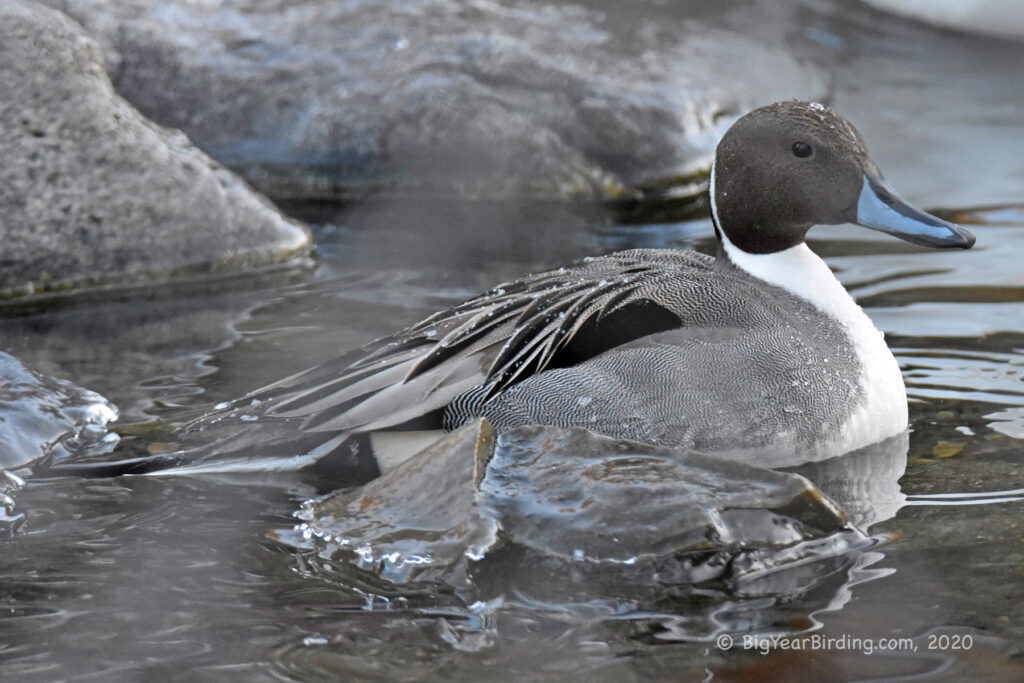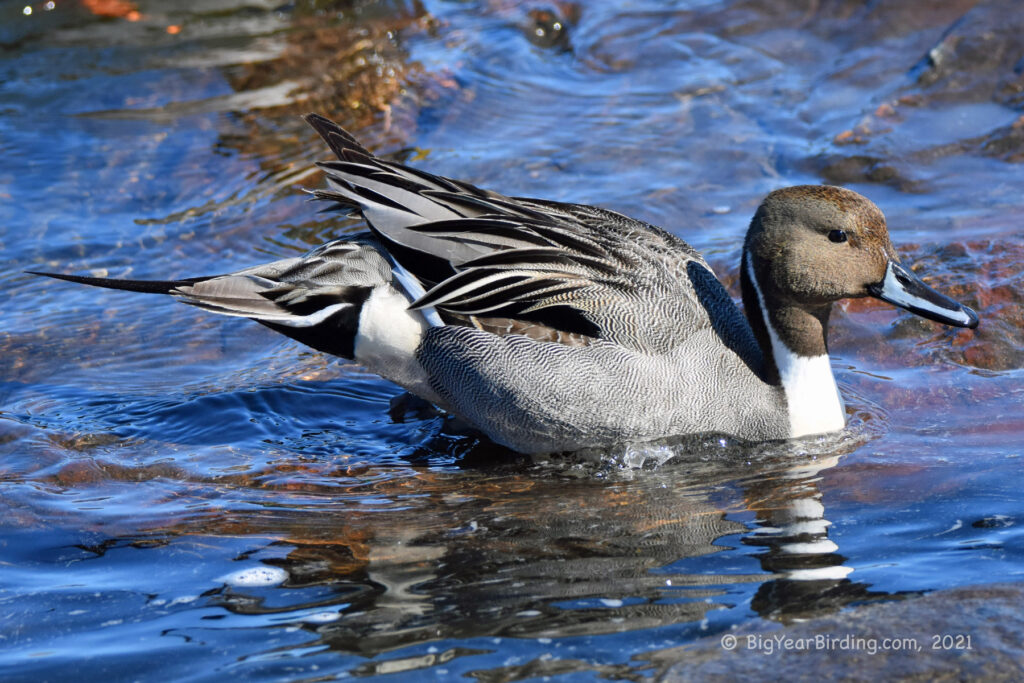The Northern Pintail, also known as Anas acuta, is a migratory duck species found across North America, Eurasia, and northern Africa. These ducks are recognized for their long, slender necks and pointed tails, which help to distinguish them from other duck species. Adult males, or drakes, measure approximately 21-29 inches in length and weigh between 1.5-2.5 pounds, while adult females, or hens, are slightly smaller, measuring 19-23 inches in length and weighing between 1-2 pounds.

One of the most distinguishing field marks of the Northern Pintail is the male’s long, pointed tail feathers, which are typically longer than the bird’s body. The drake also has a distinctive chocolate-brown head and neck, a white breast and belly, and grayish-blue wings with black and white markings. Female Northern Pintails have a mottled brown appearance with a dark stripe running through their eye and a white patch on their throat.
Northern Pintails are migratory birds that breed in the northern regions of North America and Eurasia, including Alaska, Canada, and Russia. During the winter months, they migrate to southern regions, such as Mexico and the southern United States, as well as parts of Europe, Africa, and Asia. In North America, they are considered early spring migrants, typically arriving in the southern United States in late February or early March.
During their migration, Northern Pintails are known to form large flocks, sometimes numbering in the thousands, as they travel between their breeding and wintering grounds. They are also known for their distinctive flight patterns, which include high, twisting aerial maneuvers and quick wing beats.

Northern Pintails are primarily herbivores, feeding on a variety of aquatic vegetation, including seeds, stems, and leaves. They may also feed on small aquatic invertebrates, such as insects and crustaceans. The birds are important game birds and are hunted in many parts of the world, with some populations experiencing declines due to hunting pressure and habitat loss. In some regions, conservation efforts have been put in place to protect these birds and their habitats.


